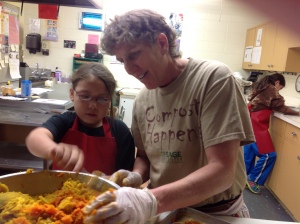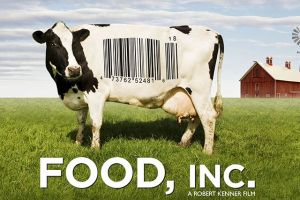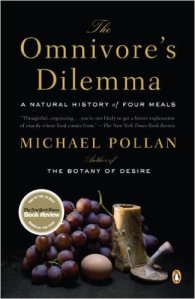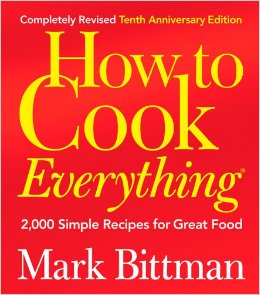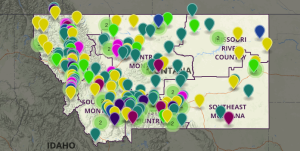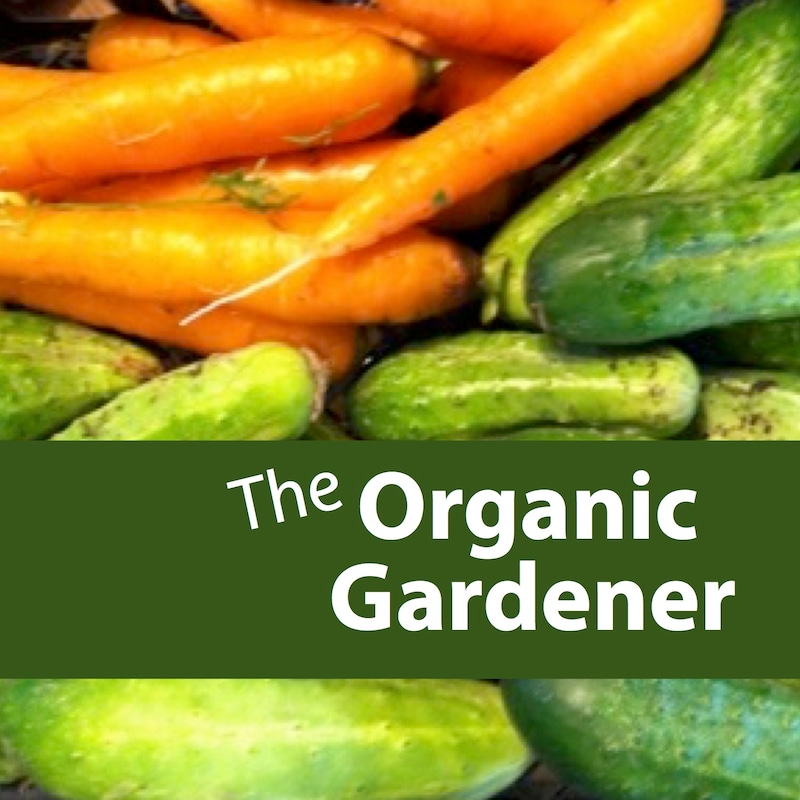
Shownotes
Rosie Goldich works with Opportunity Link, Inc. as an AmeriCorps VISTA. She is currently working on several food security initiatives, such as a food security assessment and working with Alternative Energy Resources Organization on their Abundant Montana project. Prior to coming to Havre, she graduated from Clark University with a B.A. in Economics. She has previously worked in resource development at Habitat for Humanity in Shanghai, China and Worcester, MA. Rosie is very interested in pursuing a career in food systems and outreach.
Rosie is originally from Eastern Connecticut. When she’s not at work, she can be found traveling around Montana, hiking, reading, and hanging out with friends.
Tell us a little about yourself.
My name is Rosie Goldich. I’m currently serving as a AmeriCorps VISTA
![]()
Opportunity Link is a non-profit about the size of South Carolina.
Our operating region consists of Glacier County all the way to Malta and down to Cascade, or Judith Basin and also include the three reservations, Blackfeet, Rocky Boy and Fort Belnap in that area.
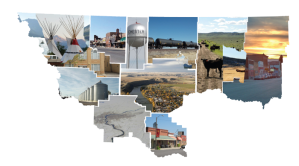
So we do housing projects downtown revitalization, things like that, we are also the parent organization of North Central Montana Transit bus service. 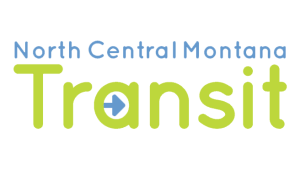 Twice a week we have special service down to Great Falls. Very low cost, $1 one way so that makes it very affordable to get across the high line. That’s a little bit about what Opportunity Links does.
Twice a week we have special service down to Great Falls. Very low cost, $1 one way so that makes it very affordable to get across the high line. That’s a little bit about what Opportunity Links does.
I’m a Vista and I was brought on for the Montana Regional Food Assessment and Planning Project. But if you want a short name for that we just call it, the Community Food Project, grant writing and local capacity for building local food systems and sustainable
outreach for people who might not realize what a local food system is. Within Opportunity Links we have 8 USDA food deserts.
We have 20k people living in those food desert, people who need better access to healthy foods.
I’ve talked about food deserts a little. You have 8 food deserts in your region.
A Food Desert is People who are low income and have low access to healthy fresh food.
Rural food desert you would have to travel over 10 miles to get to local healthy food.
An Urban food desert means you have to travel over 1 mile to find local healthy food.
In an urban distance traveling a mile in a rural situation traveling over 10 or 20 miles isn’t that uncommon
A local food system is a community where you use local food. Some organizations do it up to 250 miles. So all the food that is grown and produced, processed and consumed within a 250 mile radius, some might consider it within a 400 mile radius. There are no federal guidelines to what are considered local.
I’m a 180 miles to Missoula. So down by Stevensville. And I’m 145 miles to Browning.
Havre to Kalispell is 262 miles
The size of south Carolina.
Your food travels 5 miles.
Average food or produce in the US travels 1500 miles from where it’s grown to where it’s consumed, which is an interesting figure.
The episode before you is with Patti Armbrister and she talks about food miles so listeners should have just heard that.
I love Patti! She’s up in Hinsdale. Also steering Growing Leaders Youth Summit is a great event that is happening all across Montana.
Rocky Boy Reservation, Kalispell, Billings, Helena, and Bozeman maybe. What it is is a partnership between NCAT = National Center for Appropriate Tech and local Non-profits. Getting the youth interested in local foods. Not just what a commodity crop standpoint, they are learning in FFA and 4H
Patti Armbrister is our Keynote speaker.
Mike Dalton who does Growing Gardens from Garbage, Dr. Bob Quinn who does Kamut International out of Big Sandy. I’m on the Steering Committee for Rocky Boy’s education event, inviting kids and teachers to learn more about what’s going on in Montana. What food systems and food security issues that are going on in Montana right now.
Oct 24th can register online. NCAT.org
I talk about where they built the high school on the corner of this big intersection, the closest place for them to get food is McDonalds, there is a Costco, but you know, there’s a Walmart, there’s a Naturals there, and they did
There’s a Subway and a Taco Del Sol, … but a regular grocery store like an Albertsons, a Rosauers to Super One, to me is the biggest food desert. The hospital is close, there’s apartment buildings, I consider Kalispell a big urban
There’s a big difference between a Costco Apple, and an IGA apple, these big box stores you don’t know where they’re produced… really need to think about how many miles has this traveled, what kind of chemicals and pesticides Things that are not healthy for you, eat more fruits and vegetables, but how many miles has this traveled and how many chemicals and pesticides am i ingesting right now? And then GMO’s a whole other subject. That’s huge!
I focus on children’s nutrition feeding the future of this generation and America. When the only option in a town like Kalispell is to go to Costco, or
There are 56 Farmer’s Markets. which sounds like a lot, but it’s a really big state! There’s a lot of gaps, and their only option is to go to a convenient store. they just aren’t having the options people need to eat good food.
Even if they have an apple its gonna cost more and candy bars are 2 for a buck and an apple is $1.00
High sugar foods are cheaper, they can buy more of them for a price.
I do understand the temptation when I can buy 3 of the for a dollar.What am I gonna choose, especially for a lot of rural low income families who are only thinking my kids are hungry and I need to feed them.
A lot of things the healthier option is more expensive
One issue we are all really facing right now, is that food systems and healthy food needs to be brought into the health care debate. I think one reason healthy food isn’t be talked about
People aren’t talk about it, is eating healthier will reduce health care costs.
you’re healthcare costs are going to increase
common thread, people wanting to get off of pills and having to take so many supplements and vitamins. And one way to do that is to eat better food and give them access to better food at a cost they can afford! Right now its not an option! I don’t see a lot of options and connections like that. Montana has a very high obesity and Type 2 diabetes rate. Eating right is part of that healthful total lifestyle. When I get out in the community, I talk about working on local food systems people get really excited. People want it they just don’t have access to it!
So I’m trying to figure out how do we get good locally grown food i
We grow Cherries, Flathead Valley Cherries, only a few processing plants in Montana so they go out of state and then they come back. How does that make any sense? One really big issue and upcoming topic that needs to be discussed is having more local small local processing centers. So people can grow their own food and process it and then distribute it.
Just a bill passed the cottage food bill. Allows people to make jams and jellies and pickles and things and process them themselves. More regulations for health and safety rules. Such a great step forward in the local food movement.
I went to the cottage food class. Which I thought helped open up a whole local without having to have a storefront or commercial kitchen.
Promote local food and people eating from their gardens, It will help strengthen local farmer’s market, and breaks down that barrier for people who don’t have access to a comercial kitchen to sell their products at local farmers markets and help them bring in some revenue so they can keep it growing. Great move for local foods and small businesses. As the next farmer’s market season when next spring when they all pick up would like to see more locally processed at Farmer’s Markets. I think it’s really going to increase.
Joyce Pinson from Kentucky said having food you can taste is one of the best ways to improve sales at a Farmer’s Market. If you show people how to cook a food, she says she can sell her squash for $3.99/lb right next to someone who can’t get 25¢ for one just by cooking it and showing people how to do it and how good it tastes and easy it is to cook.
Another thing about eating healthy, you can’t just give people brussels sprouts and expect them to know what to do with them. Do you have access? Do you know how to cook it in a healthy manner?
One program I am trying to get funding for to get cooking classes in communities.
Here is a squash, this is the price of a serving..
this is really healthy for my family.
It’s not expensive.
Especially for something like squash that grows all over Montana. When people see how to cook a lot of local foods then it definitely gets them more interested. I can be healthy and I know how to cook the food that I grow!
do a value added product.
The value added product is like having something they made like baked goods or making pickles from cucumbers right?
Selling cucumbers
Adding a monetary value to the product.
So well my office is at opportunity link, I work with MSU northern. I’ve been working with their bio energy center and their botany department. They have a green house currently that we are trying to get funding for, and make usable.
To bring kids from local systems to the green house, this is how we’re making peppers, growing tomatoes, this is what a fresh tomato, taste likes, it’s really easy to grow. The most important part for getting kids interested in food is having them grow it themselves, there’s something so special and magical about kid saying “Look I grew this carrot and I am going to eat this carrot because it’s mine.” Community based nutrition needs to start with kids,
it defintiely needs to be a family affair, getting kids interested in nutrition and schools is really important. Montana has an amazing Food Corps program. They work with local public school systems to get kids more involved in gardening, cooking food, stuff that’s really really important.
The food corps is more like the peace corps except about food right?
Americorps Vistas’ do capacity building work
Food Corps work directly with kids, directly growing the vegetables things like that. There’s also state Americapors who are like vistas as well.
Energy corps members who work with renewable. there’s lots of different facets to that program.
When I was in Browning I joined this nutrition group, and they eventually started a running group and then I eventually ran my first 1/2 marathon. We would run 3 days a week, and 4 of us went 2 younger kids and then us two older people and they could lap us but we all went each week!
when you’re really passionate
someone’s goal is to lose weight
A good example would be, I became a vegetarian just over 5 years ago. It all started I watched the documentary Food Inc in school. If you don’t know anything about food systems and the American Food Culture. Opened my eyes to how meat slaughtering is done and Monsanto, etc. All those current food systems right now. I was like I don’t think I can ever eat a chicken nugget or hamburger again. I initially went vegetarian and it just kind of stuck. I started doing more research. What is America food culture? How has it changed? I started reading some more.
Omnivores Dilemna Michael Pollan
Mark Bitman,the author of How to Cook Everything. He used to be a NYTimes food writer. Did this research project on the true cost of a hamburger. I thought this is insane. As I started in my personal research I decided I wanted to work in nutrition and food
I took this class at Clark University on helped me understand what the current issues are on the producer side and the consumer side.
How my love for food research came to be. It’s definitely a personal passion of mine. I’m glad I can be working in it, because it’s something I love so much.
I was just telling my grandkids when you go to college, you just don’t have any idea what’s out there. People that you meet, or activities that you partake in. Look at the Montana EVST students
When I graduated, I wanted to get my masters I didn’t know what I wanted to do, I was weighing my options, I noticed that both MSU and UMT have sustainalbe food track
it’s an environmental studies how linked food systems research is…
More and more people are
How I got involved with AERO, I started working on their Abundant Montana project. I was using before I started working on it.
It’s this great interactive map, it’s just abundantmontana.org. It’s like an agritourism site. You can search for farms and ranches, farmer’s markets, food and drink restaurants who specialize in local food or who have food plants, and an other category. You can search by where you are, so you can search by city, zip code, name of the place that you are looking for. Say I’m here in Havre, I can search Bear Paw Meats their processing plant in Chinook, and the other one is their store here in Havre.
It’s a great tool if you are looking for local food, where is my local farmer’s market? an what are the hours? and who do I contact? And if you’re a farmer interested in selling at the local farmers market and get the market managers contact info. What I did for AERO added more...
